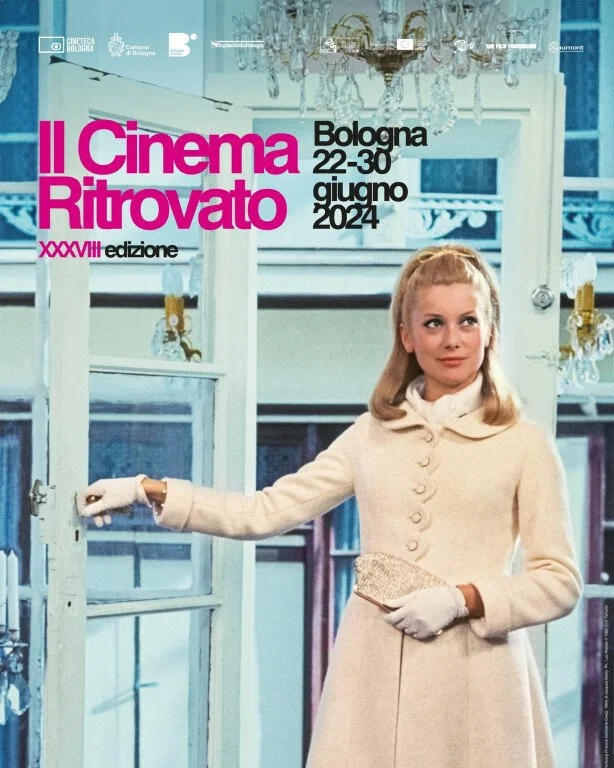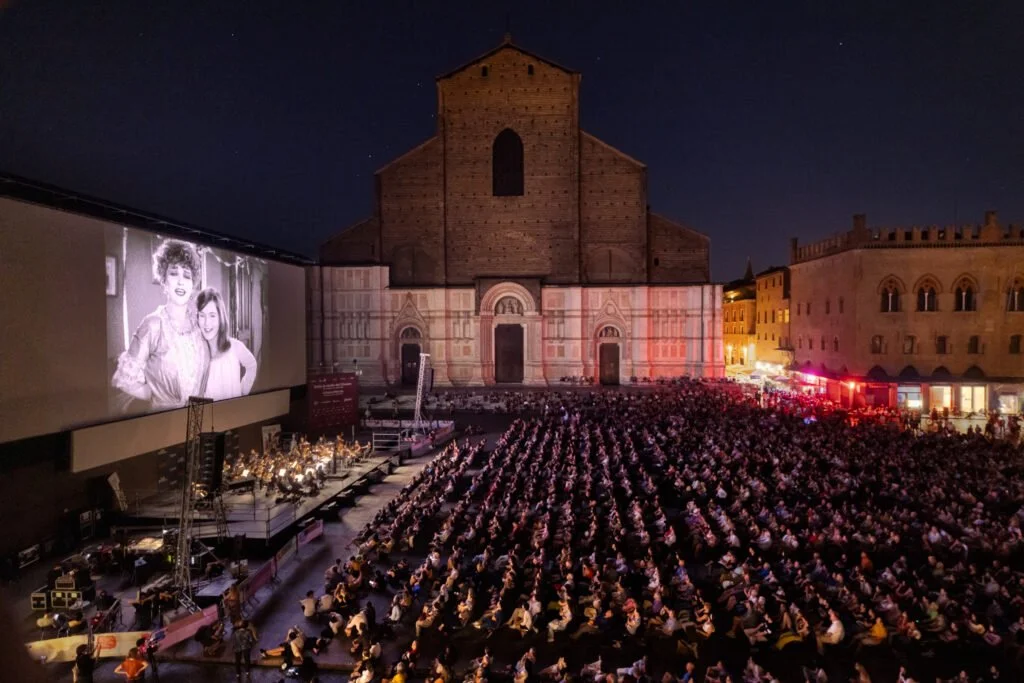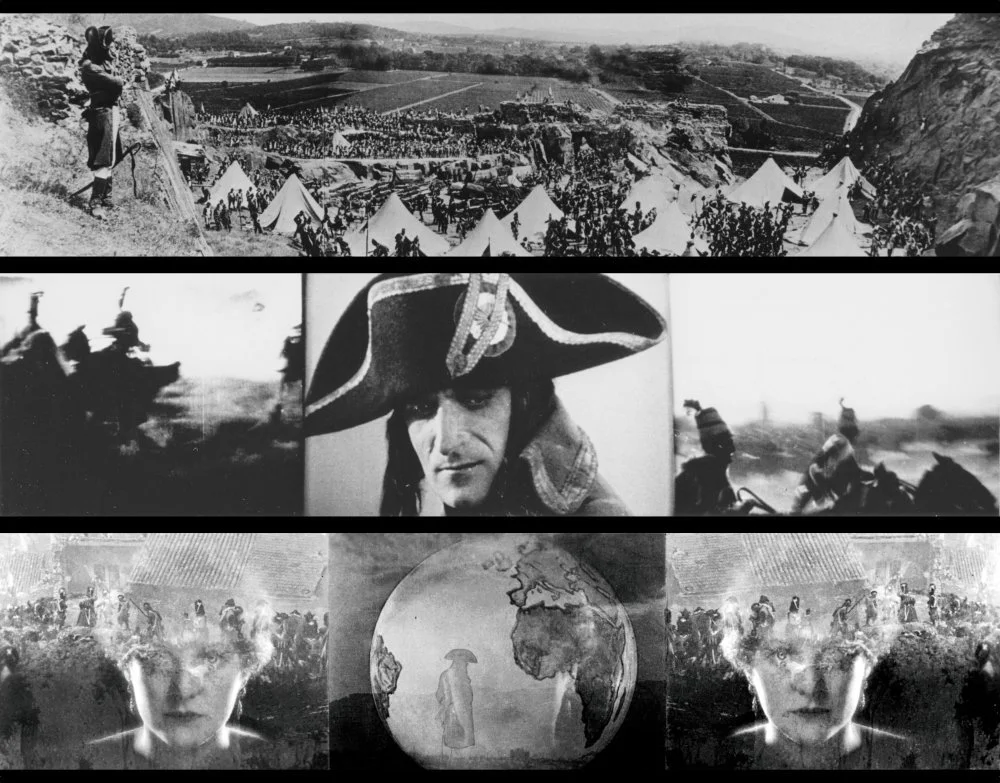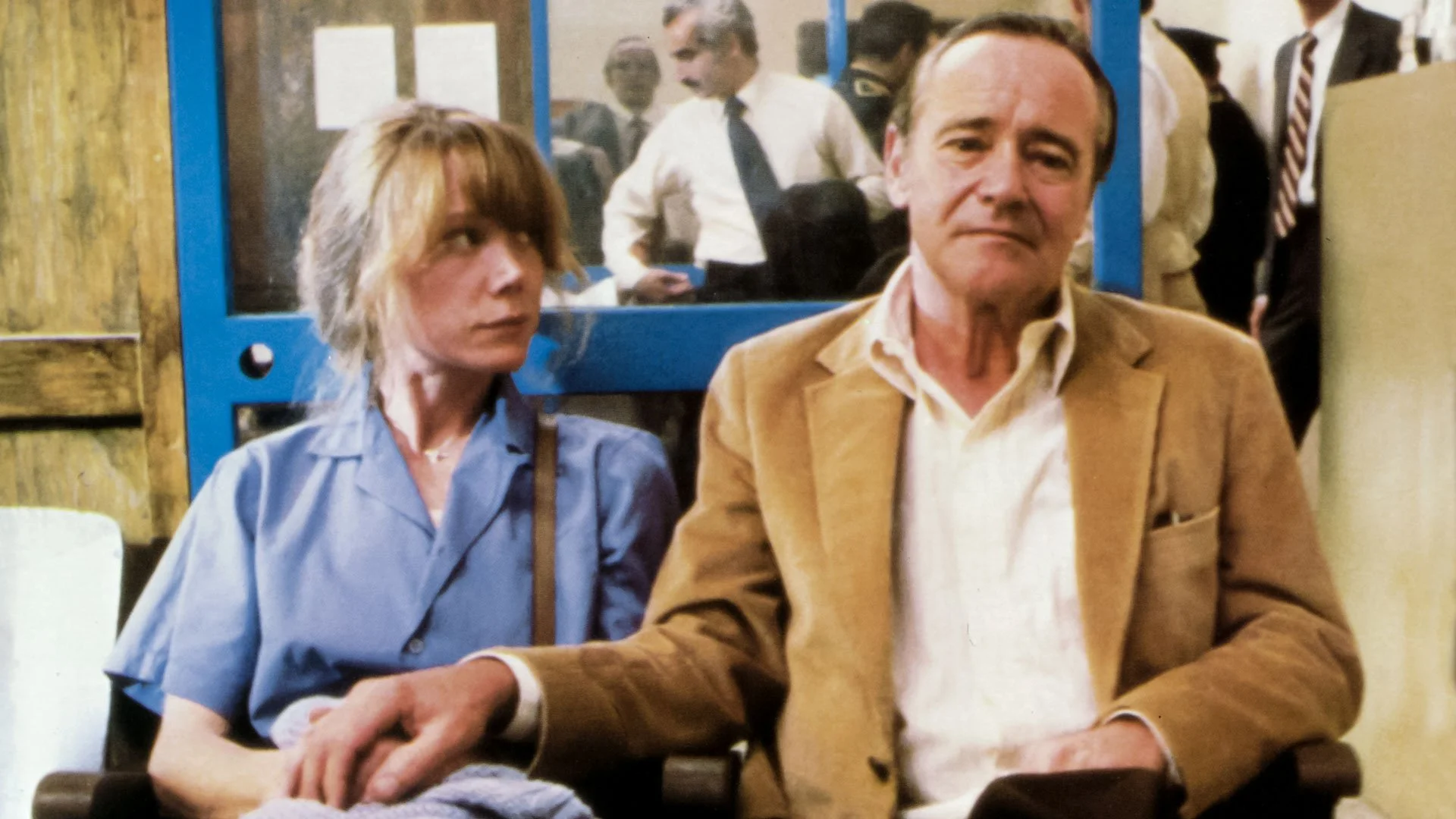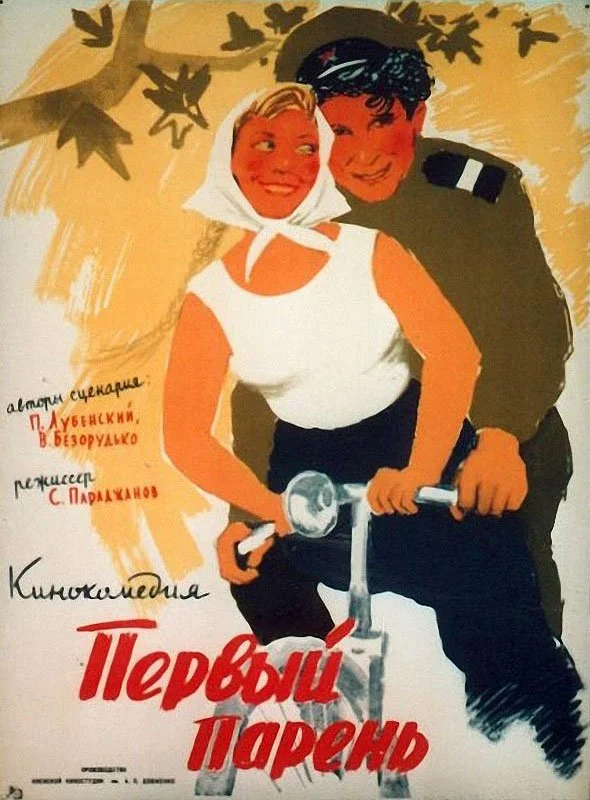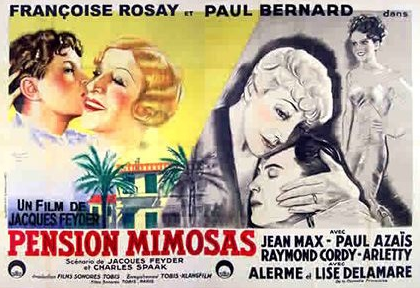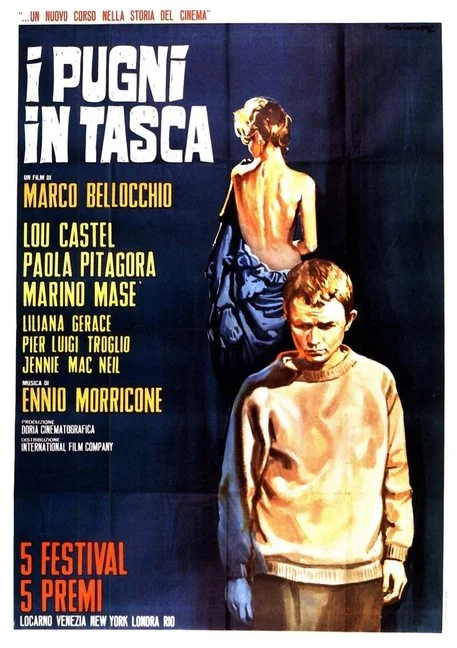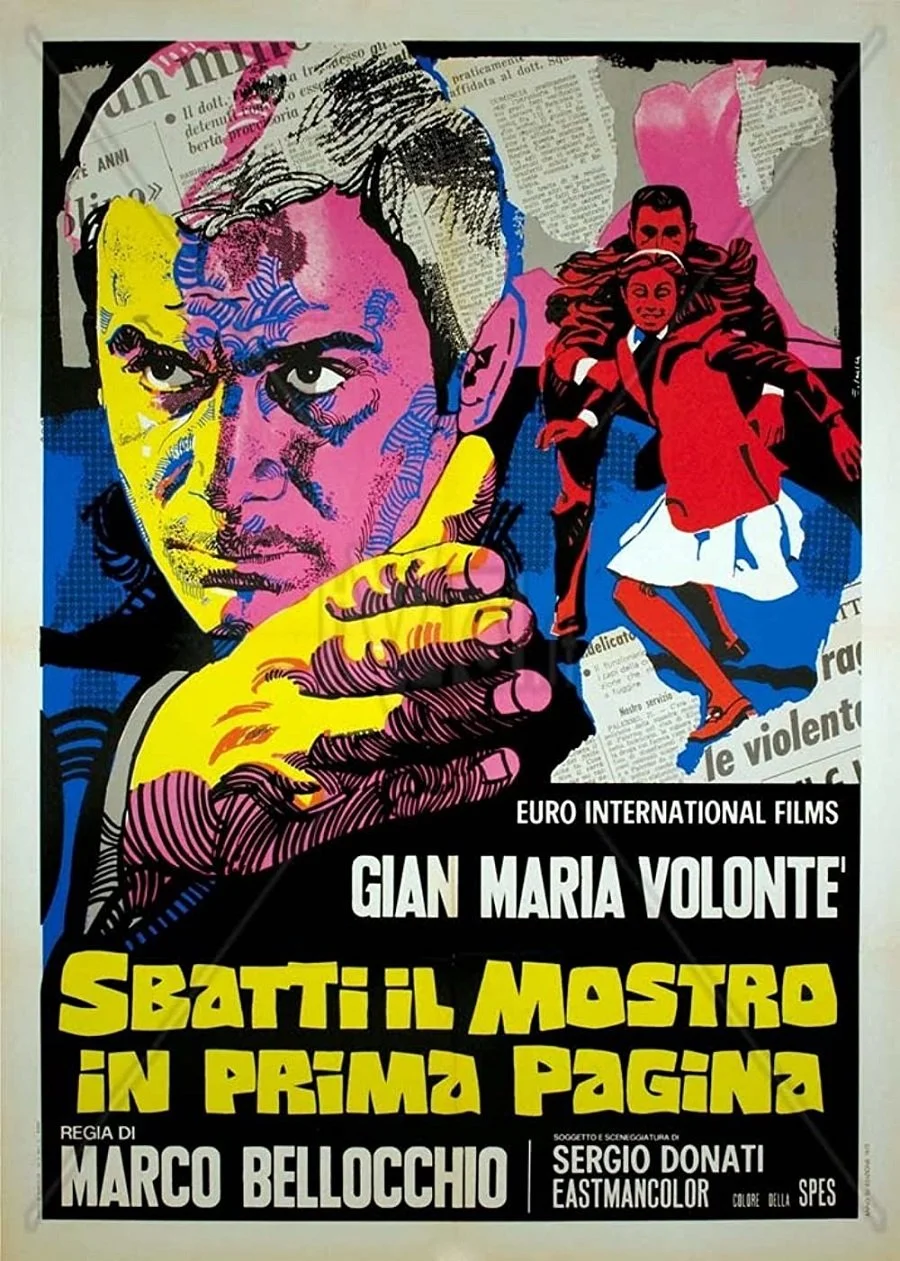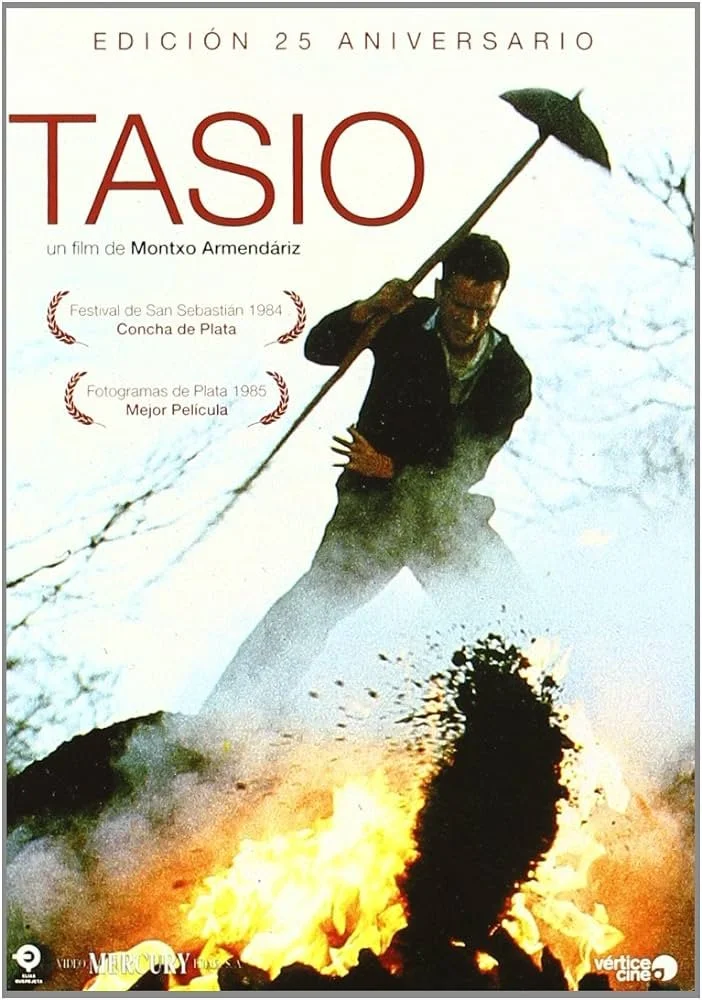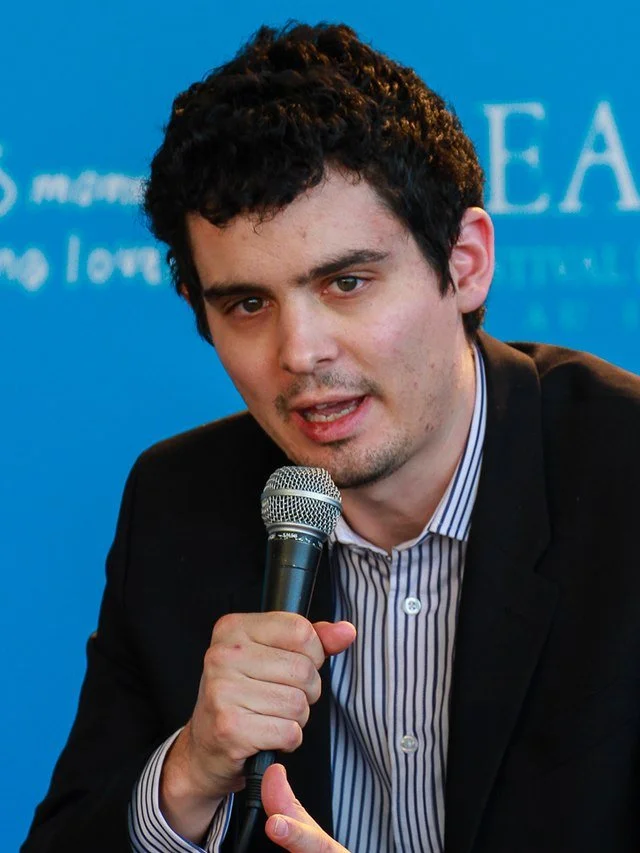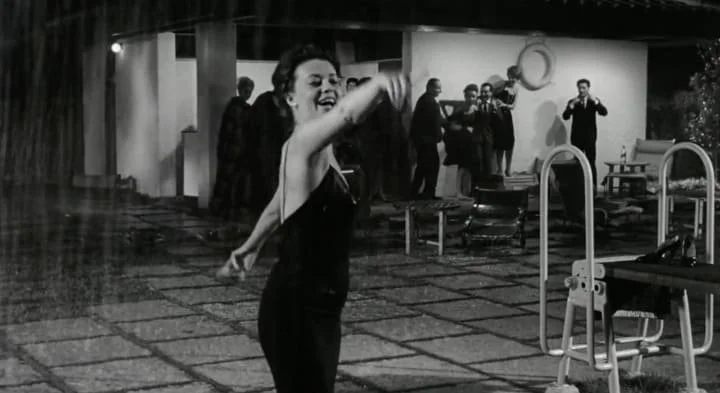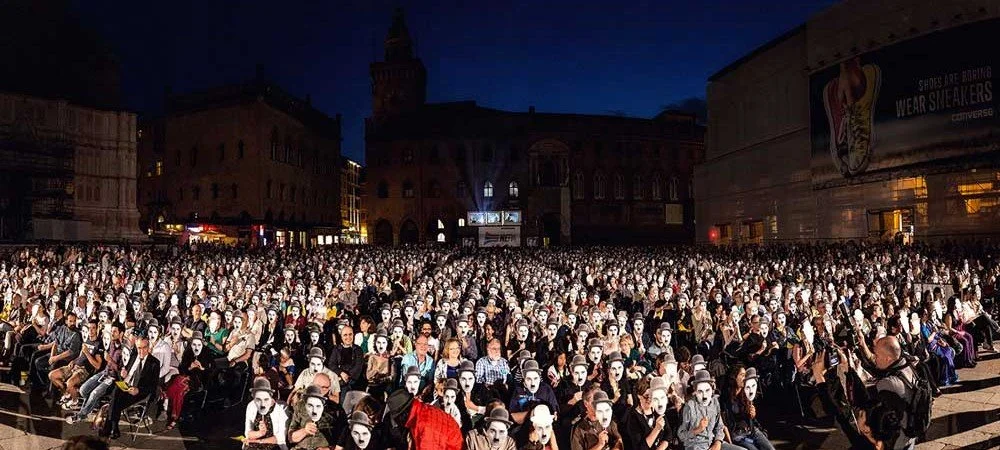A WEEK AT IL CINEMA RITROVATO By Matthew Gentile
You can find out more about this famous wonderful international film festival for movie lovers by visiting: https://festival.ilcinemaritrovato.it/ospitalita/
The city of Bologna is famous for many reasons. Its food scene ranks among the highest in the world (it’s the home of ragu, tortellini in brado, and many other dishes that make the mouth water). One can argue it’s the first of its kind: the college town, as the University of Bologna is the oldest college on record in Europe. It’s the home of Giorgio Morandi, the incredible still life artist — the great filmmaker Pier Paolo Pasolini — and the list of things that make Bologna special goes on and on.
Yet something you may not know about Bologna is a magnificent annual event titled: IL CINEMA RITROVATO — a film festival designed for cinephiles. Organized by the Cineteca Bologna, along with many sponsors, the festival programs approximately 480 screenings of rare hidden gems and beloved classics in only two weeks. World-class filmmakers such as Costa-Gavras, Wim Wenders, Marco Bellochio, Damien Chazelle, Alexander Payne, Darren Aronofsky, and Alice Rohrwacher — just to name several that came this year — attended and introduced either their own films or masterworks that impacted and inspired them and engaged in meaningful conversations about their craft as well as the history and the state of cinema. Whether you’re a filmmaker or a film lover, the festival is a haven and a rarity. Not unlike TCM Fest in Los Angeles, this festival is not about networking, schmoozing, selling movies, or minute-measured standing ovations — this festival is about one thing and one thing only: the love of cinema and watching it on a big screen with a passionate and engaged audience.
And, to get to do it in a city that has some of the best and least expensive restaurants in the world, you could do far worse.
I first learned about IL CINEMA RITROVATO from my friend and colleague Imogen Sara Smith, who I met in New York City while promoting my debut feature, AMERICAN MURDERER. Imogen is one of the smartest and most encyclopedic film minds I’ve encountered and I regularly ask her for film recommendations when I’m either writing a script or prepping for a shoot. Her book IN LONELY PLACES: FILM NOIR BEYOND THE CITY is one of my favorites and her biography on BUSTER KEATON is a must-read. One day over coffee, Imogen told me about the famed IL CINEMA RITROVATO and it sounded like a dream to me..but how likely was it that I’d be in Bologna?
Well, after AMERICAN MURDERER premiered at the Taormina Film Fest in Sicily in 2022, I met many amazing people in the Italian film industry who made an introduction for me to the Cineteca Bologna — whose work I knew from having seen so many restored masterpieces on Criterion and at revival theaters thanks to their efforts. After a private tour of their archives and theaters (including the magnificent and newly built Cinema Modernissimo, which itself feels out of a Wes Anderson movie) and talking with the directors of the Cineteca— I knew Ritrovato was not an event I could miss. Fortunately, I am working in Italy this summer and the timing worked out that I could attend many screenings and events.
Below are some highlights of my experience at Il Cinema Ritrovato: some powerful screenings, insightful conversations, and encounters. I provide only one caveat: my experience was likely very different from anyone else’s. Because of all the possible screenings, it’s a Mecca for cinephiles, and every festival journey is unique to itself — like a choose-your-own-adventure.
I hope you enjoy some glimpses of mine.
DAY 1— NAPOLEON (1927, Director: Abel Gance)
I love silent cinema and my favorite film is LAWRENCE OF ARABIA (which runs 4 hours), but I’ll admit: even for me: a four-hour silent film (which is only Part 1 by the way) after a week of traveling first to New York and then to Italy felt like a bit of a stretch. Yet when I saw that this film was newly restored and had heard about it over the years and saw that one of my favorite filmmakers, Costa-Gavras, would be introducing it — I knew that out of the nearly 500 screenings at the festival, this was not one I could miss.
While walking into the theater behind a couple who met on Letterboxd (the most romantic thing I’ve ever heard?), I saw a handsome older man in a nice suit standing in the lobby by himself. And it took me a second to realize it was none other than Costa-Gavras (who I’d met once very briefly when I was attending the American Film Institute where he once gave a master seminar).
Remembering how kind and courteous he was when we met years ago, I approached Costa-Gavras, re-introduced myself, and re-iterated how important his films were to me and fellow filmmakers of my generation. He smiled wide, thanked me kindly, and then proceeded to ask me about myself. When I told him about my debut and that it had premiered here in Italy, he smiled again and said: “Great. Now when will you be coming with a film to France?” He then asked me if I had seen Abel Gance’s Napoleon before. I told him I hadn’t when he proceeded to explain to me that this version that I and this audience were about to see was only the second time it would be shown since it bowed at Cannes Classics this year. The Cinematheque of Paris (of which Costa-Gavras is the director) had gone to incredible lengths to restore it to Abel Gance’s original vision.
Costa-Gavras, Fredric Bonnaud (the head of the Cinematheque Francaise), and the conductor Frank Strobel (who composed the score for this astonishing restoration) introduced NAPOLEON with Gianluca Farinelli and gave context to this picture. The director Abel Gance made this film when he was 36 years old and it came out near the end of the silent film era. The original cut of the film ran 8 hours long and in two parts, which were supposed to be the first two parts of many films that Gance would go on to make. Yet it was cut down significantly both in Europe and the states (to two hours and forty minutes) and for many reasons, it didn’t receive the recognition it deserved. But over time, there have been recuts and restorations from Gance, Kevin Brownlow, and Francis Ford Coppola — but none like the newest one by the Cinematheque Paris — which using production notes from Gance and a new score has strived to come closest to Gance’s original vision.
Strobel discussed his process of composing the score (which consists of Mozart and Penderecki): “You don’t choose music just to accompany and entertain, you use music to move people…to let them enter into a different dimension and that’s what I tried to do. I had to re-arrange, I had to transpose, I had to write transitions — I had to sculpt the songs from this other world to fit into a film that’s already edited and not going to move.”
The film rolled at the Cinema Modernissimo, and I found myself captivated from start to finish. The prologue begins with Napoleon as a youth in the middle of a snowball fight — which he runs like a military campaign (using strategy and trickery to gain on his opponents). Some of my favorite film openings act as a microcosm for the whole movie, and this film is no exception. The whole film is visually striking: the imagery of Napoleon standing on the shore watching the sunset at the horizon reminded me of Turner paintings I’d seen in London this year at the Tate Britain. The use of the color tints throughout enriches the scenes and heightens the mood. The battle sequences are especially masterful, there’s a chase scene that made me think John Ford must have seen this before he filmed Stagecoach, though it’s also highly possible he didn’t. But not unlike when you watch a Buster Keaton film, you immediately see how the geography of the stunts and the action is so clear and easy to follow. Even 94 years later, it holds up and endures.
After the screening of Napoleon — I had my first Lezione (interview) with Costas-Gavras — which ran for an hour. Costa-Gavras spoke in depth about his prolific career (though he playfully noted he wasn’t as prolific as his friend Claude Lelouch) and he spoke candidly about his experiences. First, he talked about NAPOLEON’s impact on him, as well as seeing Erich Von Stroheim’s silent magnum opus GREED. The director, Gianluca Farinelli — a fantastic moderator — remarked on how international Costa-Gavras’ career has been, a Greek/French filmmaker working at the height of European cinema and in Hollywood. Costa-Gravras replied: “I chose one life, a French life with my wife of 55 years.”
He had many incredible anecdotes, including about how he began as an assistant to legendary filmmakers Jean Gino, Clouzout, and Rene Clair and worked as an assistant director on many movies (a path not unlike Akira Kurosawa, which these days seems less and less common for some reason). His debut feature, THE SLEEPING CAR MURDERS, put him on the map and was quite a success -- but was followed by what he described as a ‘sophomore slump’ in SHOCK TROOPS. What he learned: “When a film goes well, everyone sticks together. When it doesn’t, you naturally drift apart.” He remarked that sometimes a catastrophe happens after success because “you settle and you don’t pay as much attention to the details”. Costa-Gavras bounced back quickly however with his third feature and the classic Z, which announced him to the world as a master filmmaker.
When making MISSING in the early 1980s for Universal, the studio asked Costas-Gavras who he wanted to play the lead. When he proposed Jack Lemmon — the studio executives rejected the idea: “But, he’s a comedy actor…is this a comedy?” (kind of crazy, when you think of how many brilliant comedic actors have given great dramatic performances). Yet Costa-Gavras stood his ground and eventually, one brave executive backed him up and Lemmon was cast (in a role in which he’d later be nominated for an Oscar, and Costa-Gavras would win himself for Best Adapted Screenplay with his partner Donald E. Stewart).
When asked about what draws him to material — Costas-Gavras expressed that it can come from anywhere, a book, an article, an idea. Yet he said a theme that seems to keep coming back up for him is about the idea of not standing up for what one believes in. “Silence always worried me”, said Costas-Gavras. “We sometimes see things and we don’t open our mouths.”
Farinelli asked him: “You’re a great filmmaker, how do you see the future of cinema?” Costa-Gavras replied that it becomes challenging when one has so many choices of what to watch at any given time — but that he does have hope, and asserted that “movie houses have to survive.” That gained him more applause.
If attendance at festivals like IL CINEMA RITROVATO or Secret Movie Club or screenings at the New Beverly and the Vista in Los Angeles or the Film Forum in New York are anything to go by, they will.
DAY 2— Sergej Parajanov’s PERSYJ PARUBOK (1958) (The First Lad)/Jacques Feyder’s PENSION MIMOSAS (1935)
When consulting the menu of films available to watch at Il Cinema Ritrovato, one can get easily overwhelmed. Luckily, Imogen Smith recommended to me two hidden gem films that occupied today’s front half:
The first was the Soviet-Armenian auteur Sergej Parajanov’s PERSYJ PARUBOK (known in the States as THE FIRST LAD) — his first feature as a solo director. Daniel Bird, one of the world’s leading scholars on Eastern European cult cinema introduced the film and discussed how it exists in a unique sub-genre of ‘social realist musicals’. Parajanov’s film is stunning as it captures farm life with vibrant color, complex lateral camera moves, and bold framing that show a similar sophistication to one of my other favorite Soviet filmmakers: Mikhail Kalazov (in fact — Bird said in his introduction that this film is in direct conversation with the masterpiece THE CRANES ARE FLYING). Released in 1958, PERSJY PARUBOK, was the most commercially successful film of his career before he went on to make the renown THE COLOR OF POMEGRANATES. It was projected in the Modernissimo on a stunning 35 mm print.
Shortly after, I downed an espresso, popped a focaccia with sausage and broccoli into my mouth, and walked across the square to the Arrechino Cinema to see PENSION MIMOSAS (1935) — directed by Jacques Feyder — a French auteur, to whom Marcel Carne was an assistant. Pierre Oliver of TF1 introduced the film and discussed how at the height of Feyder’s fame in France, the great director had accepted an offer to work in Hollywood — but quickly became disillusioned and returned to his native France where he kept making films. The film’s style has been described as poetic realism, it’s subtle and understated — and it’s a fascinating exploration of the psyche of a gambler. I can’t even imagine how ahead of its time it must have been when it came out in the 1930s, and it has one of the best endings I’ve ever seen.
This day continued with a Lezione with Thierry Fremaux, the head of the Cannes Film Festival and the Lumiere Institute, with Gianluca Farinelli moderating again. They discussed Fremaux’s career – specifically the launching of Cannes Classics, and how the fight for these restorations is the fight to preserve culture.
“Cinema is the memories of the country and the people,” said Fremaux. “And you need funds to preserve culture.”
He talked about the need to merge contemporary and classic cinema and stressed the importance for young filmmakers to get connected to the past and do their best to understand the history of this art form. He remarked about Greta Gerwig, who headed this year’s Cannes jury, and her encyclopedic knowledge of film. He gave another great piece of advice to young filmmakers: “Instead of using social media for an hour, watch a documentary about classical cinema.” Amen to that.
DAY 3 — Also known as: the Marco Bellochio Day.
Marco Bellochio is a master Italian auteur who broke onto the film scene in 1967 with his piercing debut, FISTS IN THE POCKET (aka I PUGNI IN TASCA) — a satirical darkly comic psycho-drama about an epileptic young man in a dysfunctional family who decides to kill his family. It’s a twisted film that very much influenced me when I was writing the script for AMERICAN MURDERER — and Bellochio, now age 84, is still making films (he has made 25 features to date — his latest, KIDNAPPED, premiered at Cannes last year and is gripping).
Thanks to Thierry Fremaux and the Lumiere Institute, at Il Cinema Ritrovato, they screened an under-seen film of Marco Bellochio’s titled SBATTI IL MOSTRO IN PRIMA PAGINA (English: Print the Monster on Page One). Released in 1972, this was Bellochio’s third feature film as a director, and stars Gian Maria Volonte (most famous for his roles in the Spaghetti Westerns such as A FISTFUL OF DOLLARS and FOR A FEW DOLLARS MORE among others). The film juggles a sprawling ensemble of fascinating characters effortlessly — and it tells the story of a right-leaning Italian newspaper in Milan called Il Giornale. When a young girl/the daughter of a professor is found raped and murdered — the paper interferes with the police investigation and seeks to blame a young left-wing student. It’s a fascinating exploration of the ethics of journalism and what we now know as ‘fake news’ — and for me, it belongs in the conversation with ALL THE PRESIDENT’S MEN and NETWORK as one of the best films about journalism ever made. And considering it was made over 52 years ago, it’s insane how much this film resonates today. At only 83 minutes, it moves at a clip and juggles a big ensemble of compelling characters – and Volonte’s performance is a masterclass and shows us how complacency and deception lead to evil.
Like a legend—Bellochio introduced the film in his suit and sunglasses and gave a Lezione afterward with Farinelli and actor/director Sergio Castelitto. It was interesting to learn more about how Bellochio became a director. He had started out wanting to be an actor and eventually studied at the Centro Sperimentale di Cinematografia in Rome under Andrea Camilleri — who pushed him to become a director.
There were many gems in this conversation (including stories of working with Marcello Mastroianni) — yet my favorite piece of advice he offered filmmakers came in three words: “Accelerate but slowly” — meaning, he explained, get on with it, go and fight to get your movies made, but don’t rush and be sensible. I thought within that paradox was a profound message that all artists can learn from. That you can be determined and go for something, but considerately. When faced with delays, which are inevitable in filmmaking, he suggested that you can improve your preparation. He also stated how important it is for directing professors and teachers to be there, to be involved. His quote: “Maybe it’s a matter of time now, but I like to do things well…getting deep into things, into the details is important…not just in film but in every aspect of life.”
DAY 4—TASIO (1984, Monte Aremdnariz).
Kicked this day off with this beautiful and intimate drama about a charcoal burner and poacher living in a small town in Spain. I hadn’t heard of this film or this director until today, but I was seated in the screening next to Valeria Camporesi — who is the director of the Spanish Film Library and the Filmoetca Espanola. She gave me context on this film, which was Montxo Aremndariz’s debut feature, and sprung about because he made a documentary about a real charcoal burner. The film is very moving and well-observed, with gorgeous landscape photography that somehow manages to feel unobtrusive and never calls attention to itself (I could see the film someday being on a double bill with Renoir’s THE RIVER). Not unlike when you watch a film by Ken Loach, the feeling with Tasio is that you are there, living life with him and experiencing what he and his family and friends see. The film navigates quite a few time jumps and transitions with such ease since we watch Tasio age from child to teen to adult.
When Montxo Armendariz introduced it, he discussed how he was moved by Tasio’s decision to live within the natural world and not take more from it than we have to, to not be driven by greed and materialism. The details of this film and how it captures Tasio’s life are simply remarkable.
SORRY WRONG NUMBER (1948) This was the first English-language film I saw at the festival, and it’s been on my list for a minute. It’s a film noir, probably my favorite genre. I love Anatole Litvak, Burt Lancaster, Barbara Stanwyck, and Wendell Corey — and I had wanted to see this when it was at TCM Fest last year.
It’s a taut noir with a fun flashback structure that unfolds with ease. Barbara Stanwyck plays quite a complex character and is cast against type as a spoiled brat who manipulates the world around her. Burt Lancaster plays a Stanton Carlyle-esque deceiver from the wrong side of the tracks. The use of deep shadows in Sol Polito’s photography is pitch-perfect, and Lucille Fletcher’s script (which was based on her hit radio drama) navigates a seemingly simple plot of a woman trying to stop a murder with multiple perspectives in a way that feels reminiscent of RASHOMON and even the Siodomak classic Noir THE KILLERS — and it builds to a suspenseful, and surprisingly bleak yet delightfully cynical ending.
LEZIONE WITH DAMIEN CHAZELLE I closed out my Il Cinema Ritrovato with a talk with another great filmmaker: Damien Chazelle. It was yet another wide-ranging conversation, where Chazelle talked about his background (and his early fascination with documentaries as well as discovering revival films in Paris in his youth) and his approach to filmmaking.
When asked about how he works with actors, Chazelle started by saying that he was still learning, and that “there are many schools of thought…and no recipe that works for everyone”. He proceeded to explain how he approached the concept of rehearsal in each of his films. For WHIPLASH, with JK Simmons — there was no rehearsal, other than the proof of concept short film that they made where they famously filmed one scene from the script to compel financiers (a strategy I learned from Chazelle for my debut in his generous NO FILM SCHOOl article…where he laid out how he and his team did it).
For LA LA LAND, he said they of course rehearsed the music and dance sequences — but that Ryan Gosling, Emma Stone, and he would have a lot of conversations about the script, yet never a formal ‘putting it up on its feet’ of the dialogue-heavy scenes. For FIRST MAN — he filmed Ryan Gosling, Claire Foy, and the cast of the family for two weeks without a script, and captured them living their domestic life (and a lot of this material ended up in the film). For BABYLON, Chazelle only rehearsed with Diego Calva — where he and his wife would film him with an iPhone and she would read every other part for Calva. “My wife does a great Brad Pitt”, Chazelle said to a laughing audience.
When asked by Farinelli about his relationship with Italian cinema, Chazelle immediately pointed to Fellini and LA DOLCE VITA and its influence on BABYLON. He said: “I approached BABYLON like an Italian film, while I approached LA LA LAND like a French film. They’re both failed versions of that, but that was my concept.” The applauding audience didn’t seem to agree that either film was a failed version of anything. And watching him speak, I must say Chazelle comes across as incredibly genuine. Many artists in interviews use false modesty — yet with Chazelle, one doesn’t get the sense he’s doing that. One gets the sense that he has set a bar for himself that’s so incredibly high and impossible to meet, that like Niemen in WHIPLASH, he’s still — despite being so accomplished — searching and striving to be better, questioning everything and not resting on his laurels. I’ll admit, that’s a little intimidating — but it’s also very inspiring.
Chazelle also remarked how influential Italian cinema was on BABYLON, because of his approach to filming party scenes. “You look at Visconti and even Antonioni, who one wouldn’t necessarily associate with parties, but how he films a long party in LA NOTTE or even the chaos of the stock exchange scene in L’ECLISSE.”
The Lezione ended in rapturous applause and at the end of the night, as I walked through the city to take the train back from Bologna to Firenze, I saw something incredible outside: a massive crowd in the Piazza Maggiore gathered around a big screen in the 90-degree heat to watch UMBRELLAS OF CHERBOURG (which Chazelle introduced). And I saw a similar size crowd my first night here for when Wim Wenders introduced PARIS TEXAS.
And it makes me think when I hear people say that cinema is dying or that movie theaters are going away…
…that they’re just plain wrong.
Perhaps it will change and perhaps it will evolve.
But the communal experience of watching cinema and connecting to different worlds and cultures is not only not going away.
I’d say, for this young art form, that it’s only getting started.
Matthew Gentile is a director and screenwriter based in Los Angeles. His first feature AMERICAN MURDERER is available on Hulu and other streaming platforms. You can follow him on Instagram at @matthewlgentile.

